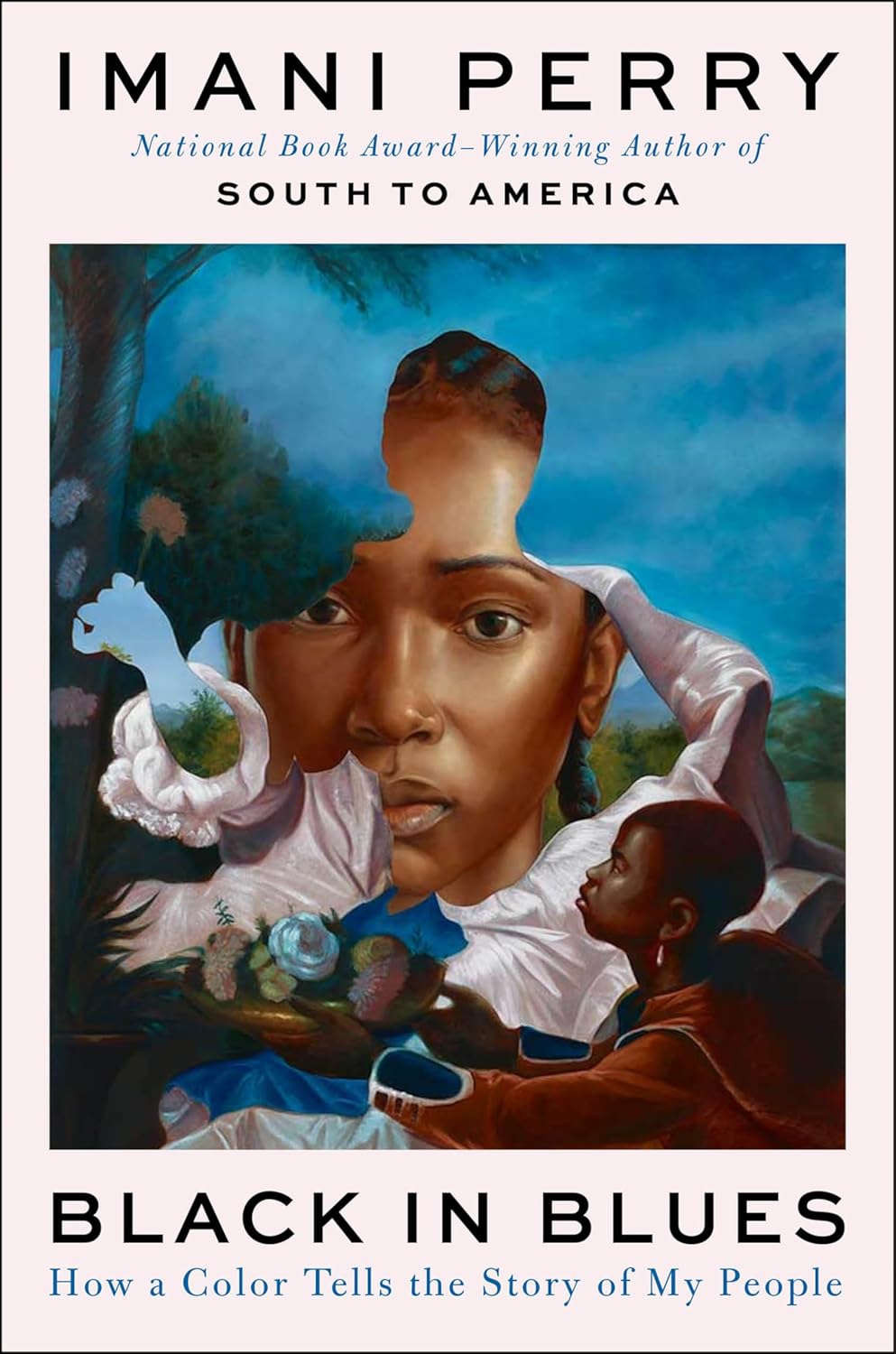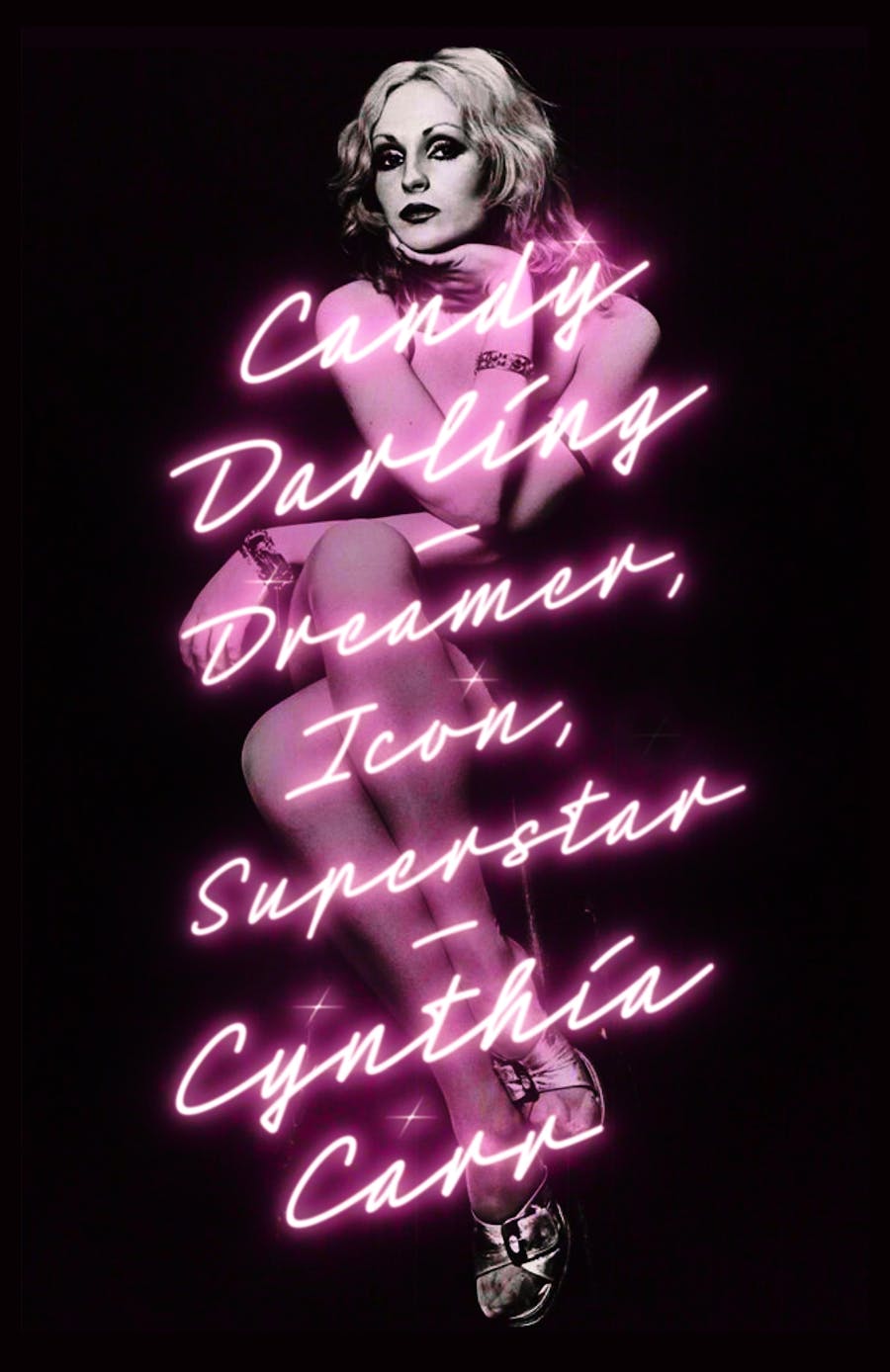Black in Blues: How a Color Tells the Story of My People
- By Imani Perry
- Ecco
- 256 pp.
- Reviewed by Sarah Trembath
- February 17, 2025
A mesmerizing ode to a hue and a history.

Black arts and letters have been concerned, for most of U.S. history, with matters of social justice. The events that have compelled Black writers to write and the dynamics that have shaped Black experience have long intertwined, like barbed wire, with injustice. Black history books, for example, often chronicle human-rights abuses and commemorate resilient and courageous leaders of the masses who are in search of true freedom from those abuses.
This is important work. But every so often, a work in that genre reveals itself to be refreshingly free from the binary of oppression and liberation. Imani Perry’s Black in Blues: How a Color Tells the Story of My People is one: a welcomed exploration of Black artistry, Black surviving, Black thriving, Black spirituality, and Black intellect through Black folks’ long-established connection to the color blue.
The book manages to be comprehensive and authoritative yet beautiful and concise. Perry is a lauded scholar and a master storyteller whose work I’ve been following since her 2004 debut, Prophets of the Hood. To write that book, which sort of floors me every time I read it, I think Perry must have created a massive synthesis of hip-hop lyricism and culture in her mind and then analyzed it all somehow, extracting its essences for naming, defining, and describing in academic prose. Here, she has done something similarly comprehensive and insightful. However, in Black in Blues, Perry applies her genius to synthesizing and analyzing all of Black culture. And she swaps out the scholarly tone for a compelling storyteller’s voice.
Black in Blues is precious, relating little-known aspects of Black history and culture and, in turn, exploring obscure aspects of well-known stories. Readers will meet many new people from the past and will see giants like Booker T. Washington and W.E.B. DuBois in a new light. Knowing that DuBois lost his blue-eyed son to medical racism, and seeing how Washington so excitedly learned to read from his blue Webster’s speller, for instance, humanizes the figures we’ve learned so much about.
It’s no secret — if you ask my 14-year-old son — that the tales told about “the same five people every year” (in his words) are not sufficient to convey the depth of Black life. Thus, Perry is performing an important service: making Black history new for seasoned readers and new learners alike. Its release right before Black History Month is timely. I hope many parents and schoolteachers read it.
Throughout Black in Blues, Perry dives deep into the past and brings back substance and detail that challenge mainstream, stark notions of what it was to be Black before anything remotely like freedom came. Through her lyrical descriptions of indigo farming, blue-and-white calico dresses, Blues music, blue beads, blue-and-white ceramics, and a range of colors painted on otherwise drab walls, she humanizes her people and what she calls their “elegant survival.” She gives shape to history and shows the moments of respite from the terror that she is careful to name even when terror isn’t her focus.
Her storytelling is concise but moves with the fluidity of poetic prose, never straying from what I see as her purpose: portraying Black people during unimaginably oppressive times in ways that allow them to “mark themselves as individuals [who were] able to bring some joy and laughter and delight in the day-to-day [along with] the ability to hope.”
She applies her skills of synthesizing massive amounts of information and of plumbing her own cultural experience in order to bring out things less seen. In so doing, she has provided a book that I will certainly use in the Black literature classes I teach. I’ve long looked for one to help me teach the sobering themes of Black history and literature without depressing my students or silencing the voices of those who spoke out in protest of their dehumanization. Black in Blues is exactly the right book.
That being said, I don’t particularly like its numerous explorations of and references to hoodoo and Vodou culture. The empowering aspects of those traditions are important to name, but in Black in Blues, they are romanticized at the expense of their oppressing aspects. Still, I won’t begrudge Perry her worldview.
More importantly, she takes readers to places they may not have been before. She explores the blue-Black, the blue-gummed, and the blue-veined among us with equal love and a vast knowledge boiled down to artistically rendered vignettes. She proves that it is possible to explore and explain the beauty of Black life beyond our best-known freedom fighters and the things they fought against. Imani Perry’s Black in Blues gifts readers with much to hold onto during this time of renewed assault on the narratives of Black people in the United States.
Sarah Trembath is an Eagles fan from the suburbs of Philadelphia who currently lives in Baltimore with her family. She holds a master’s degree in African American literature and a doctorate in Education Policy and Leadership. She is also a writer on faculty at American University. She reviews books for the Independent, has written extensively for other publications, and, in 2019, was the recipient of the American Studies Association’s Gloria Anzaldúa Award for independent scholars for her social-justice writing and teaching. Her collection of essays is currently in press at Lazuli Literary Group.

.png)